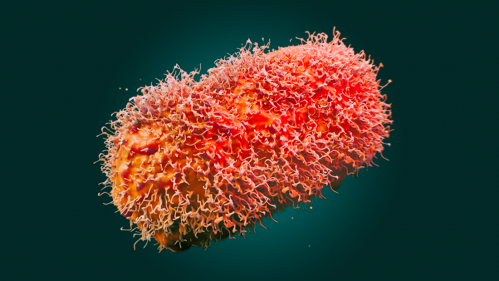What You Should Know About Monkeypox

The most common treatments include an already discovered FDA-approved vaccine as well as antiviral agents.
After two years of living in the shadow of COVID-19, many people resumed a pre-pandemic lifestyle this past summer. But just as fear of COVID lifted, another disease came to light: Monkey Pox.
As of Oct. 24, there have only been 25 deaths out of 68,000 monkeypox cases, according to the World Health Organization. The number of cases has diminished greatly from the peak in August, but the cases have become more severe in those who are immunodeficient.
Brief History
According to the Johns Hopkins Institution of Medicine:
- The Monkeypox disease is not new, it has been around for almost 70 years. The first case was discovered in 1958. Then two strains of this disease were discovered. The first stand is the strand causing the current endemic.
How does this disease transmit?
According to the World Health Organization:
- Close contact
- Infected person’s respiratory droplets
- Infected person’s lesions
- Any of the infected person’s bodily fluids
How to protects yourself:
According to the John Hopkins Institute of Medicine:
- Avoid close and unnecessary contact with other people
- Wash hands frequently
- Wear a mask and gloves, especially when in close contact with someone who has it, such as when caring for someone with it
What to look out for :
According to the World Health Organization:
- Fever
- Muscle aches
- Rash
- Blisters (which can appear days after the initial infection)
- Swollen lymph nodes
- An overall cold-like sick feeling
What to do incase you test positive:
According to the World Health Organization:
- Take temperature twice daily
- If fever above 100, chills, swollen lymph nodes, new rash develop isolate yourself and contact the local state health department for further directions
- If you get a fever then call the local health department
- If you don’t have a fever but chills and/or swollen glands after 24 hours, contact your doctor
How is the disease treated?
According to the World Health Organization:
- Because it is a known disease there are already a variety of treatments available. The most common treatments include an already discovered FDA approved vaccine as well as antiviral agents. If you plan on getting the vaccine, Johns Hopkins recommends that you get it within four days of exposure
- FDA approved vaccine (get within four days of exposure)
- Antiviral agents
- Some Smallpox treatments
Advice from the school nurse Charlotte Grossman:
- There are low rates of Monkeypox right now among children and teens
- Spread through direct contact and sexual contact
- Certain populations are at higher risk
- To reduce transmission, wash hands frequently and stay home when sick
- School staff should clean classrooms regularly and wipe down surfaces
- The county health dept. has information to help when exposed or dealing with outbreak
- CDC recommends the vaccine to exposed people and those at higher risk groups, such as medical workers
- The first sign of the disease is mostly cold and flu-like symptoms(fever); bumps and blisters appear later
- Blisters can be painful, itchy, and can scab over
- Symptoms start about 3 weeks after initial exposure
- Rash will appear 1-4 days after flu-like symptoms appear
- Symptoms last 2-4 weeks
- There is a vaccine, but is given to higher risk people
- Beachwood is not taking too many measures as there is no current outbreak in the district
- If you seem to get a rash after a fever, examine it
- If you have a rash and are unsure about it, isolate yourself
- The nurse is happy to help with any questions and symptoms you are unsure about
Interesting Facts You Might Want To Know:
According to the Center for Disease Control:
- This disease actually has two strains
- This disease is closely related to Smallpox, so some treatments seem to have an effect on this disease
- Because it is a known disease there are already a variety of treatments available. The most common treatments include an already discovered FDA-approved vaccine as well as antiviral agents












